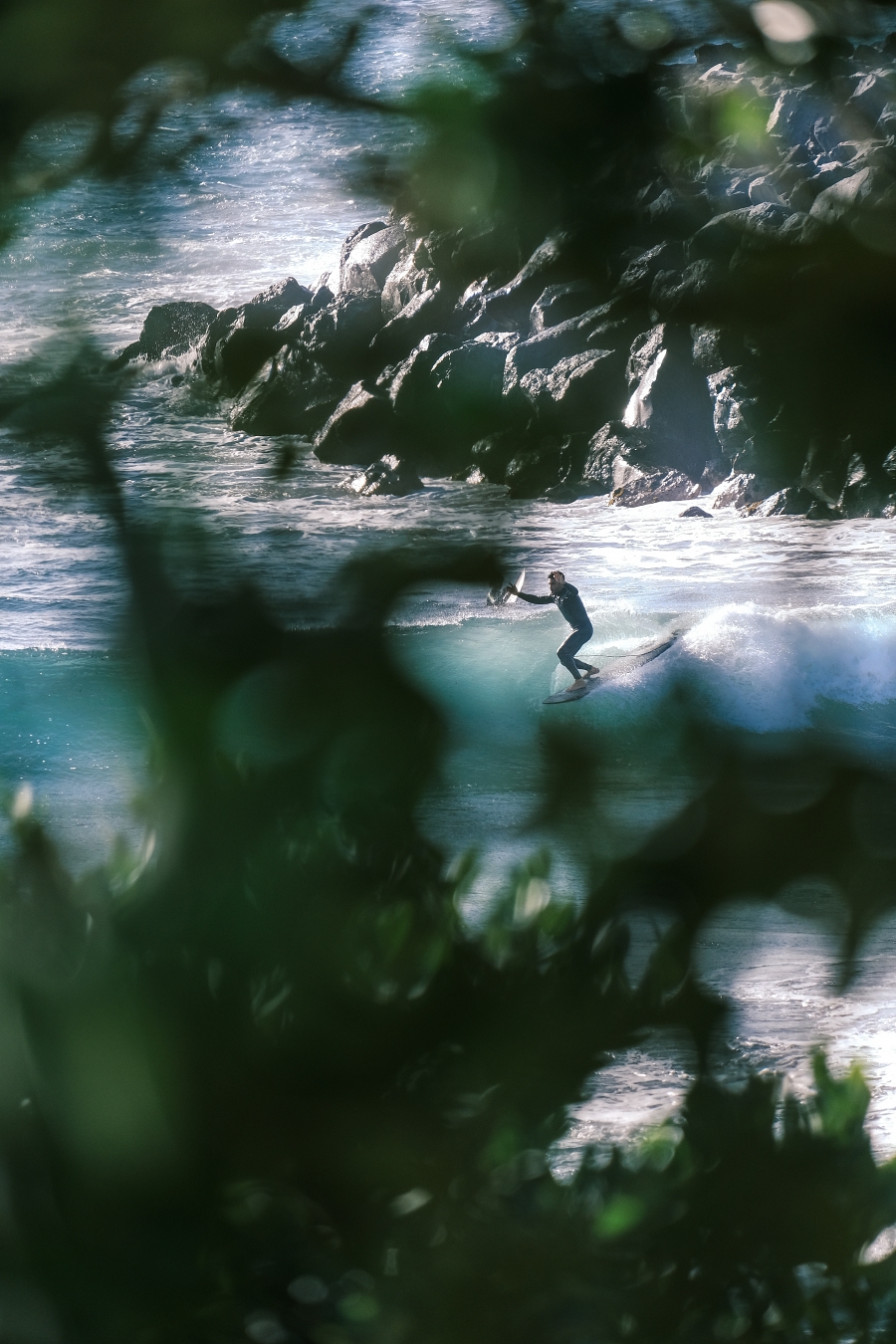tlanThere were some friends and family who thought myself and my husband were completely mad to suddenly leave London and move to an island in the middle of the Atlantic. They don’t love sea as much as we do, or to be more specific, surfing. It had been a dream of mine for some years to learn to surf and this was a large part of the reason we moved to São Miguel. I am happy but slow learner, however one thing you must understand quite fast if you want to surf is not to get in the way of the locals. Homegrown surfers can get infamously angry if random travellers start messing up their waves. Thankfully for me, and many others, the local surf community here is mostly incredibly friendly. This welcoming attitude is no-where better embodied then in the shaper gallery and community hub, Atlantic Surfers, founded and run by Bruno Gomez and Marco Costa. It’s a bit difficult to put your finger on exactly what Atlantic Surfers is before you visit their gallery – they shape, they photograph, they hold events and exhibits. Once inside however, it all seems to make complete sense, a soulful, joyful celebration of community, surfing, art and anything or anyone who happens to be passing by. Oh, and I wish I could surf like they can.
Interviewer: Tell me about how you first arrived on the island, Bruno, you’re from Lisbon originally?
Bruno Gomes: I came to the island for the first time fourteen years ago. I kind of fell in love. I’m a pirate I feel, myself, and so I thought, OK, I need to find a way to live in this place. So, the years were passing, born in raised in Lisbon but then I went to Porto, went to London, went to Hong Kong, a little bit like a pirate going everywhere. Then to São Miguel. I stayed at first in the house of Marco and I got really inspired, his house is full of photos. I asked him if he was a photographer and he said no, I am a teacher in Rabo da Peixe, I just love photography. I said, man, I love it, let’s do something with it. I went back and then I started immediately thinking, OK, I always loved the Azorean culture, the good and the bad, because there is both here, and I started thinking about it, let’s create something. We started the first steps to our project with the space we are in now. On another visit I was passing by this place which is a former taverna and I thought may be cool. It was a black hole, it was terrible the first time I came here, it was black, dark but I just had a feeling, you know. I saw it and saw this photo of people standing outside the old bar abandoned in the rubble and I thought, yeah, I can make it. I worked on it myself and I hired a mestre, a master builder, it took me about a year because I was coming and going and then two years ago, we opened. We started with this first exhibition of Marco’s work and since then we’ve been inviting friends, for example, we have a German artist living in Lisbon, Marie, doing flags right now.
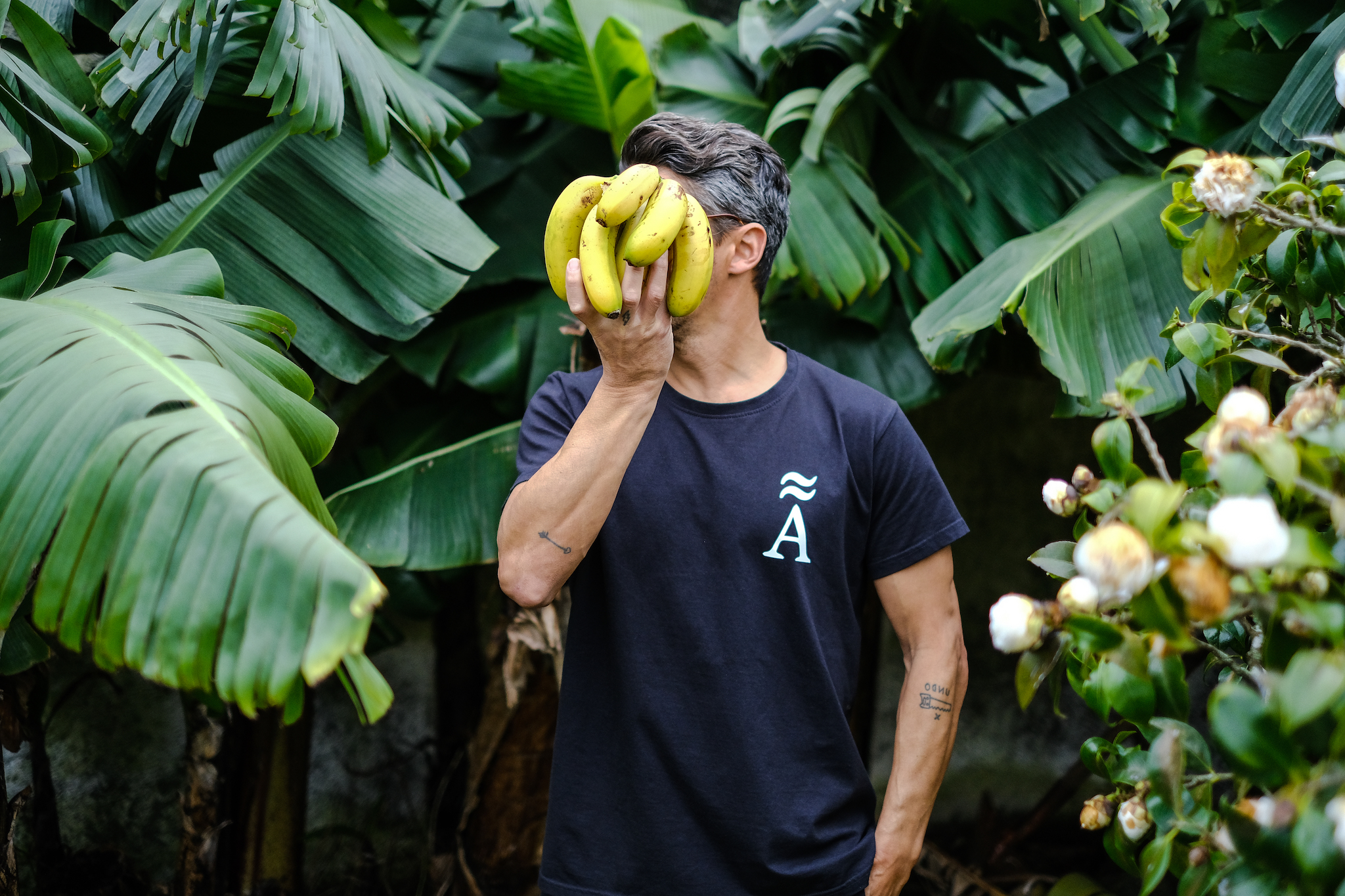
Interviewer: What’s interesting and unusual about this gallery space is the combination of art and surfing.
Bruno: Well, for a surfer, you know it’s impossible to get it out of your system. When you are really a surfer it’s impossible to be something else without always thinking about the surfing side. For us it’s quite natural, we don’t even think about it.
Interviewer: Do you see yourself first and foremost as an artist and maker or as a surfer?
Bruno: For me, it’s very difficult. I have been asked that question before and I always just think that I’m that person that kind of unblocks stuff. I’m very good at cleaning, I’m very good at helping, I try to kind of unblock some ideas. This is what I love to do.
Interviewer: One of the things I’m interested in is the old and new sides of surfing. What effect do you think your gallery space has had on surfing community on the island?
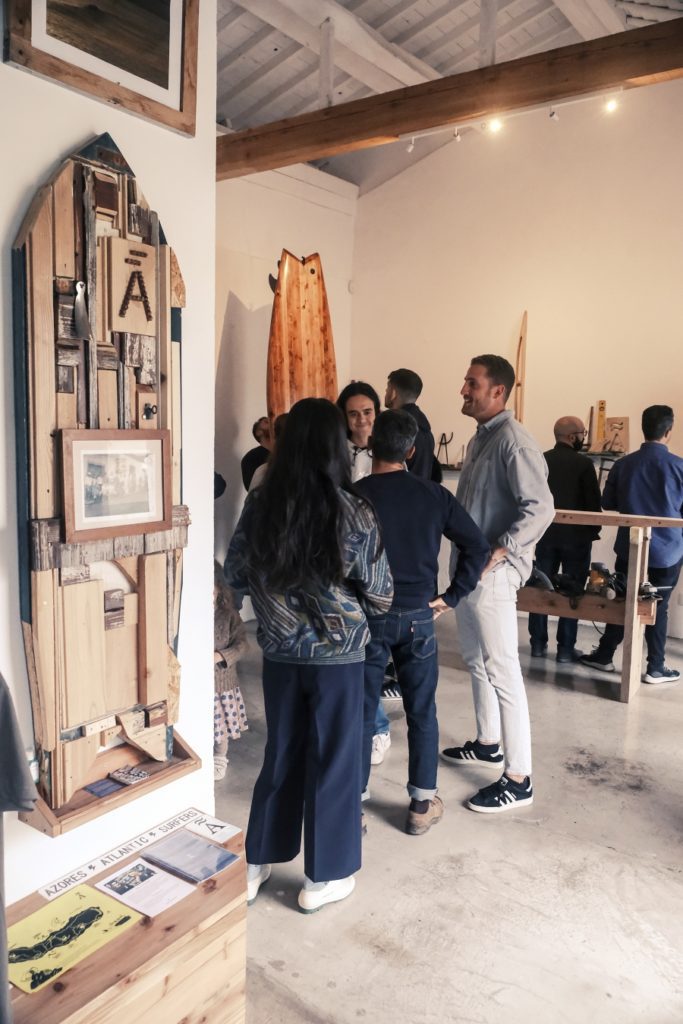
Bruno: Well one thing I’ve noticed is that the Portuguese in surfing tend to be quite individual. I lived in many different places and even when I compare of ourselves with the Spanish there is a far greater sense of community in Spain then here. Everyone is a little island. I was always interested in this dynamic of creating something. I don’t want to force people to come together, but I like to create something that people can relate to. Knowing that about the Portuguese I don’t like to force anything but I love to create things that people relate to and then do it without being forced. This is what interests me. Since starting the exhibitions we’ve had people from completely different backgrounds, even different backgrounds on the islands coming together here and that’s very interesting to have that mixing in here. It’s very cool.
Interviewer: Let’s come to the surfboards. Every time there is a good day in the waves here you can see so many of your Atlantic Surfers surfboards and especially these very distinctive black boards. Please can you tell me about these?
Bruno: Basically again, I’m influenced by the things that I am close to. Imagine here we are on an island which was created from the volcanoes so it’s basalt, it’s dark, it’s black, that was very natural for me when I started to make surfboards from here, I wanted them to have that connection.
Interviewer: You shape these surfboards?
Bruno: Yes, part of this project was to build surfboards. At the moment I am working with different shapers and I say to them make one or two surfboards for me, I’m also involved in the process but its working with them. The idea is to have different boards from different shapers. We’ve worked with shapers from the island, from the mainland, from Cabo Verde.
Interviewer: They are very beautiful, there is something which is hard to put your finger on. I love the logo too.
Bruno: Well, the logo, honestly, I was scribbling in the kitchen of Marco when I was staying there, and that’s where it comes from. Obviously the A, for what it represents, the Azores, Amor, friendship, amizade, and then obviously the ~, which is so close to us in the Portuguese language, so I just wanted to double it, to make it about the relationship with the ocean that surrounds us.
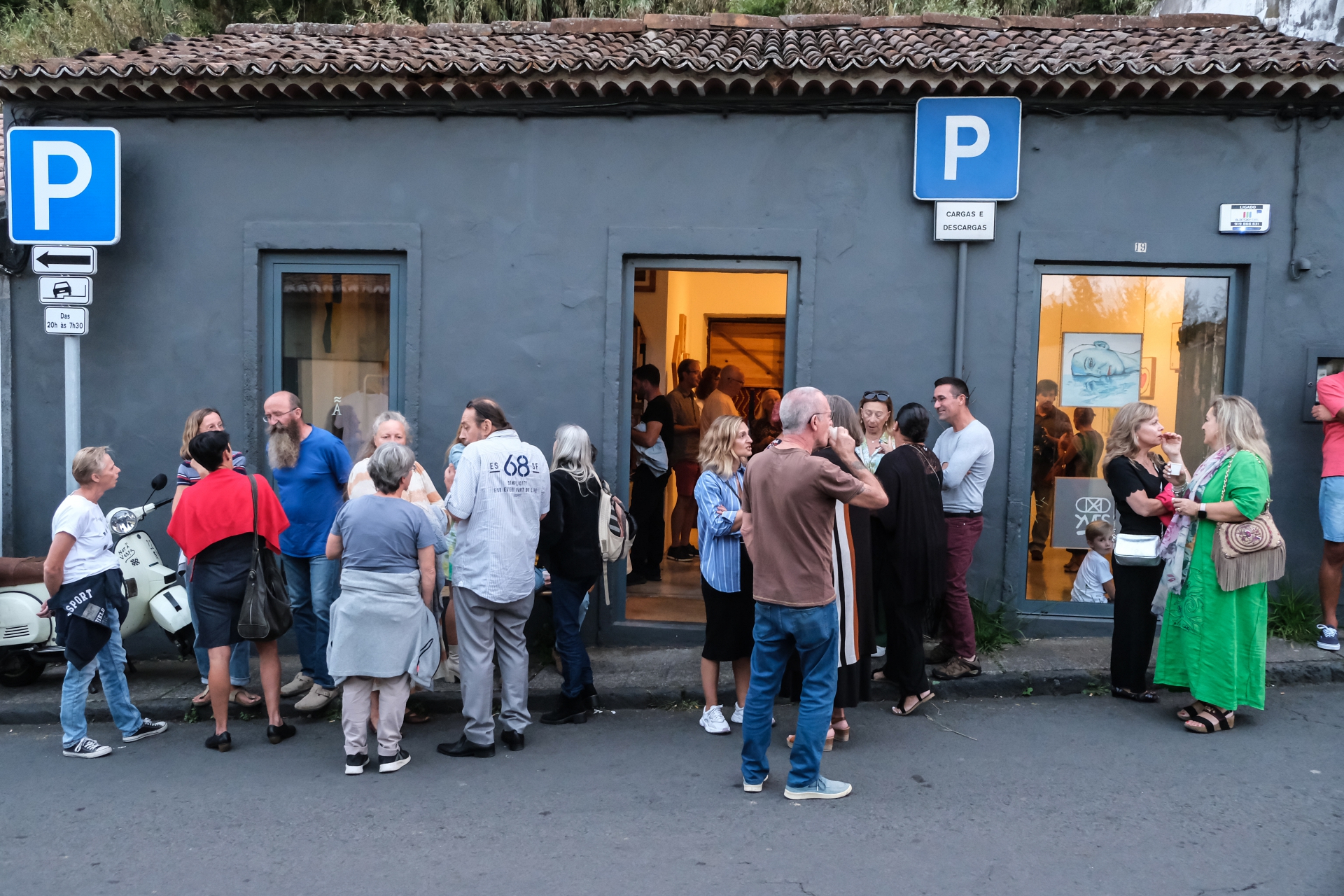
Interviewer: It’s perfect because if you just have one ~ then it’s just part of the letter, but with two it really looks like a wave, it brings it alive.
Bruno: Exactly, but it was just, an experiment, drawing.
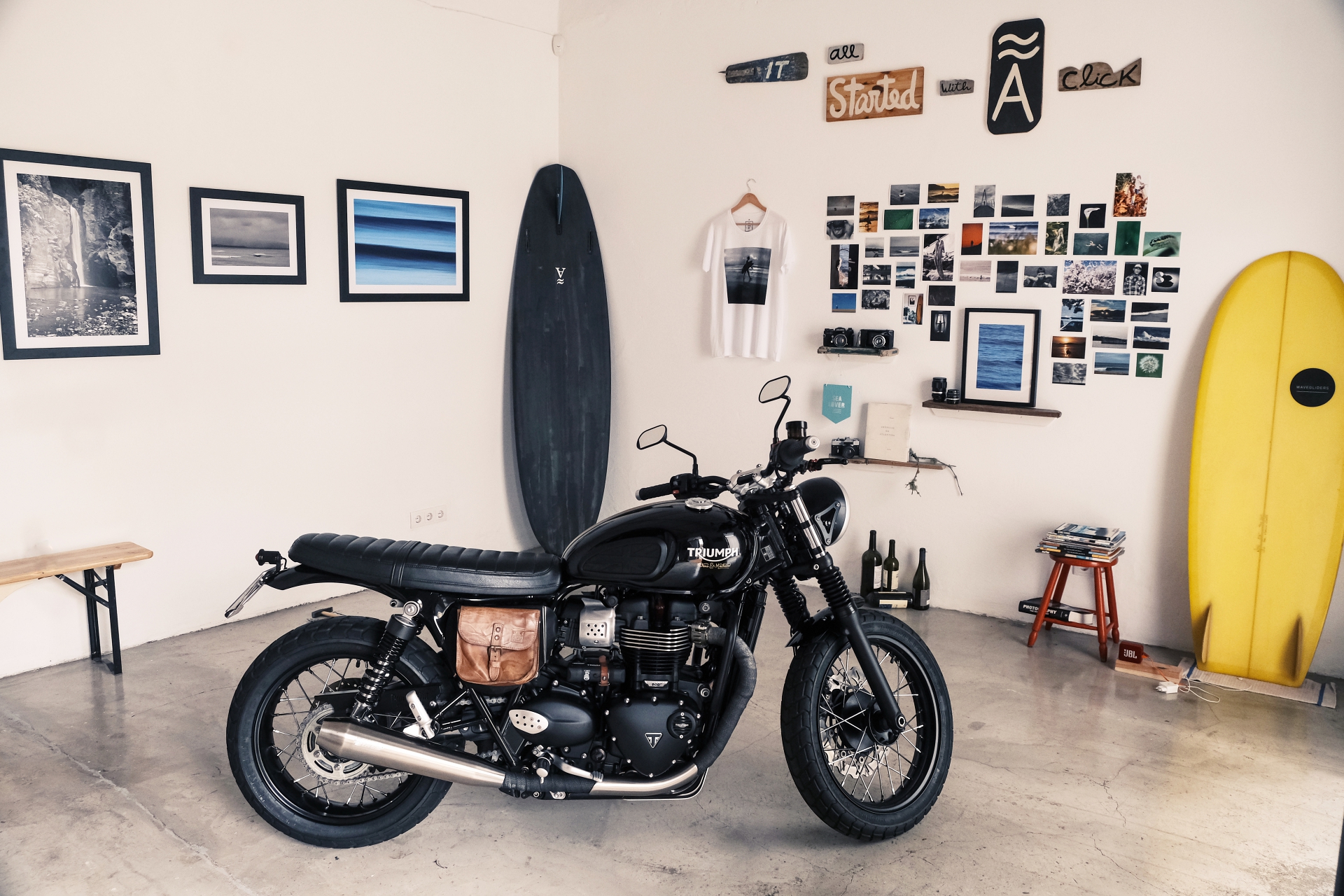
Interviewer: How do you feel now when you see so many boards around with your logo on it? It must make you feel good!
Bruno: For me, and for some of my friends from here born and raised, even without knowing anything about it they also felt related to the community through it. For me it’s amazing, sometimes I don’t even say that I created it, but I get really happy because I really feel that a lot of people feel like they are representing this idea, that all started being unofficial ambassadors of the cultural part of the island.
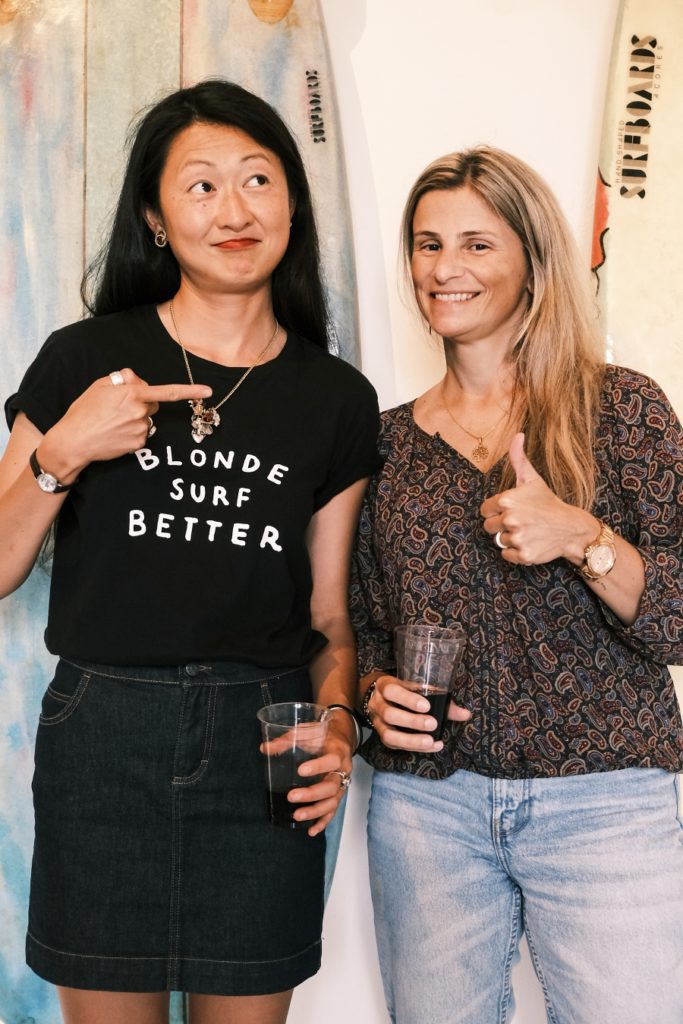
Interviewer: And what are your hopes and fears for your project now and surfing on the island which is changing such a lot?
Bruno: It’s changing a lot. We are already doing what we love and what we want and so honestly we just want to keep on doing it. I don’t want to grow it and obviously its always a pleasure to see people coming to the gallery and to the exhibitions and if we can reach a few more people, perfect, but again first and foremost we are really doing it first and foremost for ourselves and for the people that we love and then we hope that the rest will follow on naturally.

Interviewer: That’s great. And, then my last question, is how is the old surf culture being affected here by the influx of new surfers that are arriving here on the island?
Bruno: Well the truth is that here you never really had a surf culture. You had a few men that were surfing and were lucky enough to have all these waves for themselves but the truth is there never was a really old surf culture. Obviously at the moment things are really changing not only because you have new people coming into surfing but also because you have businesses like surf schools coming into it. I think it’s important to look to examples like the Garopa family who really represent the best of what Portuguese watermen should be and also the culture connected with the ocean which we have and to just not step across the invisible lines of what is right. If I am going to open a surf school that is the same kind of thing that I have seen in Bali, that doesn’t make much sense. It’s important to make sure you don’t lose sight of what came before. That’s why we always have this photo of the old tasca here on the wall, to remind us that it was a community place. You can’t lose sight of these people, we can’t lose our people, even with what we do, we try to go back to our roots and then we innovate but on top of what was here first.
